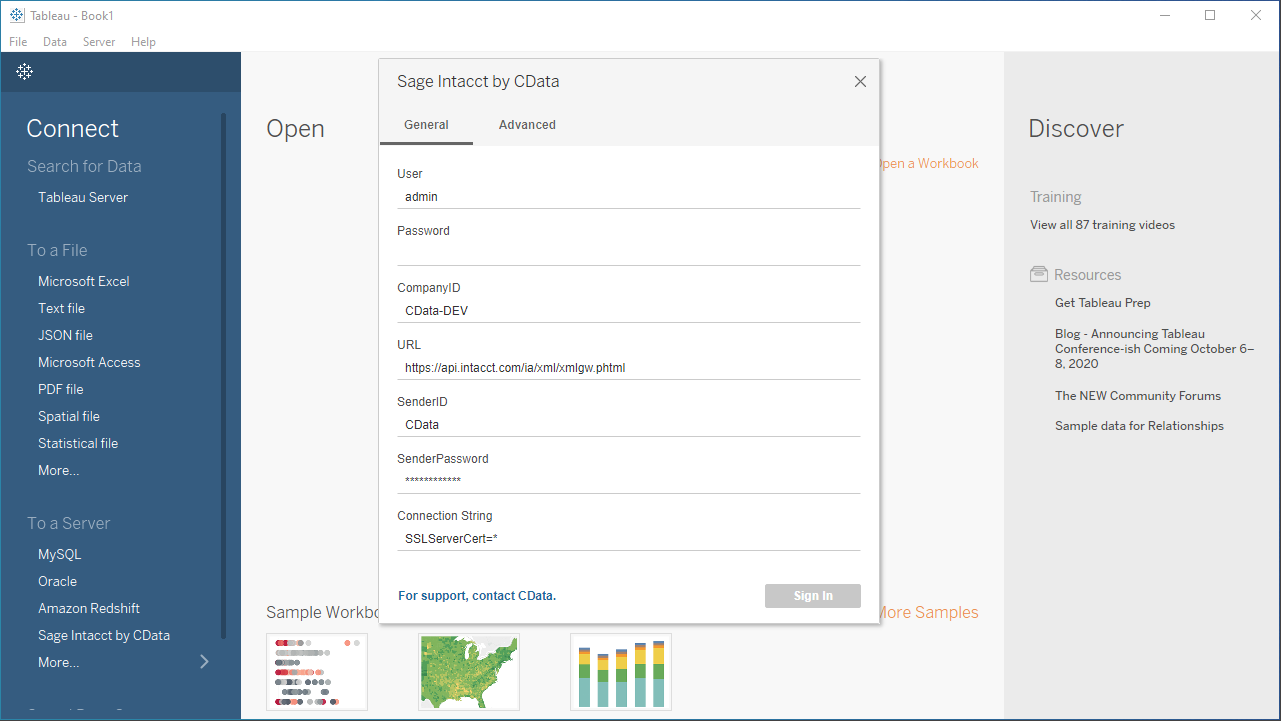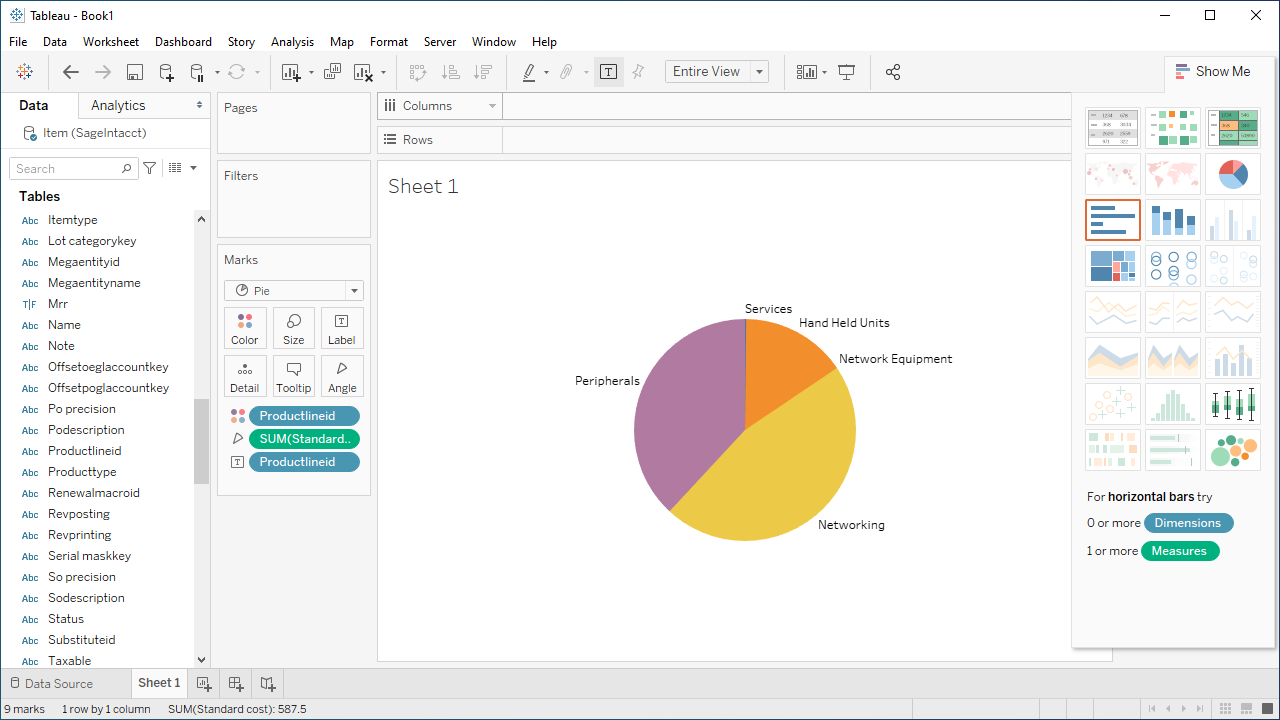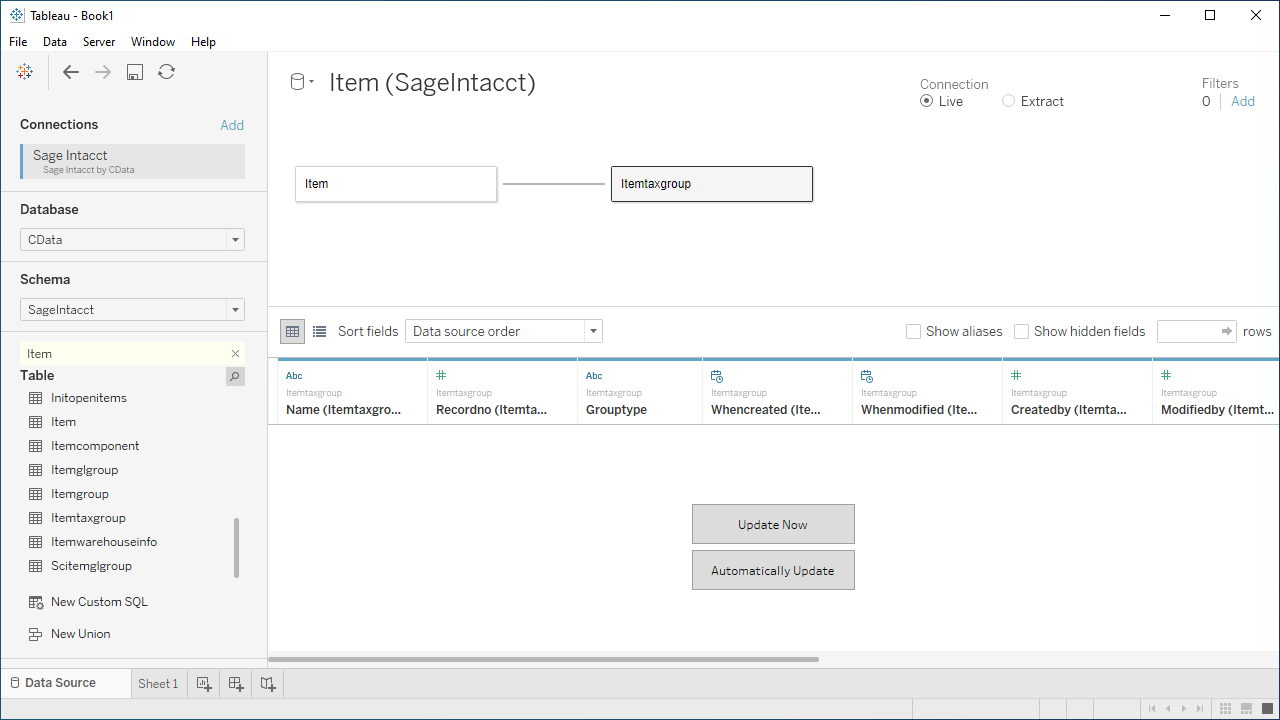Discover how a bimodal integration strategy can address the major data management challenges facing your organization today.
Get the Report →Visualize Live JSON Services in Tableau
Use CData Tableau Connectors and Tableau Desktop to visualize live JSON services.
Tableau is a visual analytics platform transforming the way businesses use data to solve problems. When paired with the CData Tableau Connector for JSON, you can easily get access to live JSON services within Tableau. This article shows how to connect to JSON in Tableau and build a simple chart.
The CData Tableau Connectors enable high-speed access to live JSON services in Tableau. Once you install the connector, you simply authenticate with JSON and you can immediately start building responsive, dynamic visualizations and dashboards. By surfacing JSON services using native Tableau data types and handling complex filters, aggregations, & other operations automatically, CData Tableau Connectors grant seamless access to JSON services.
NOTE: The CData Tableau Connectors require Tableau 2020.3 or higher. If you are using an older version of Tableau, you will need to use the CData Tableau Connector for JSON. If you wish to connect to JSON services in Tableau Cloud, you will need to use CData Connect.
Connect to JSON in Tableau
Open Tableau and click More under Connect -> To a Server. Select "JSON by CData," then configure the connection and click "Sign In."
See the Getting Started chapter in the data provider documentation to authenticate to your data source: The data provider models JSON APIs as bidirectional database tables and JSON files as read-only views (local files, files stored on popular cloud services, and FTP servers). The major authentication schemes are supported, including HTTP Basic, Digest, NTLM, OAuth, and FTP. See the Getting Started chapter in the data provider documentation for authentication guides.
After setting the URI and providing any authentication values, set DataModel to more closely match the data representation to the structure of your data.
The DataModel property is the controlling property over how your data is represented into tables and toggles the following basic configurations.
- Document (default): Model a top-level, document view of your JSON data. The data provider returns nested elements as aggregates of data.
- FlattenedDocuments: Implicitly join nested documents and their parents into a single table.
- Relational: Return individual, related tables from hierarchical data. The tables contain a primary key and a foreign key that links to the parent document.
See the Modeling JSON Data chapter for more information on configuring the relational representation. You will also find the sample data used in the following examples. The data includes entries for people, the cars they own, and various maintenance services performed on those cars.

Discover Schemas and Query Data
- Select CData from the Database pull-down menu.
- Select JSON from the Schema pull-down menu.
- Drag the tables and views you wish to visualize onto the join area. You can include multiple tables.
![Selecting table(s)]()
- Select Update Now or Automatically Update. Update Now lets you preview the first 10,000 rows of the data source (or enter the number of rows you want to see in the Rows text box). Automatically Update automatically reflects the changes in the preview area.
- Click the tab for your worksheet. Columns are listed as Dimensions and Measures, depending on the data type. The CData Tableau Connector discovers data types automatically, allowing you to leverage the powerful data processing and visualization features of Tableau.
- Drag a field from the Dimensions or Measures area to Rows or Columns. Tableau creates column or row headers.
- Select one of the chart types from the Show Me tab. Tableau displays the chart type that you selected.

Using the CData Tableau Connector for JSON with Tableau, you can easily create robust visualizations and reports on JSON services. Download a free, 30-day trial and get started today.







